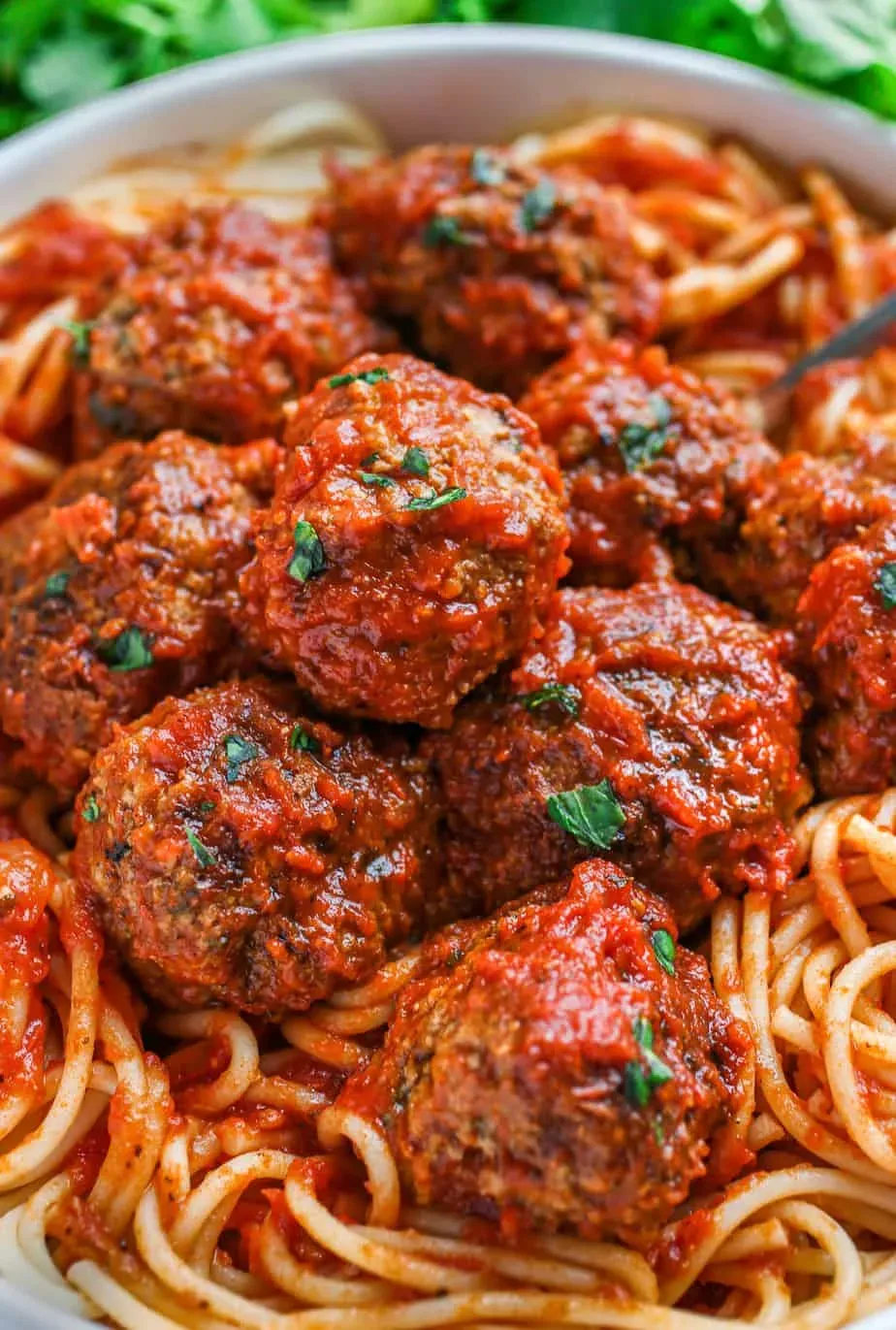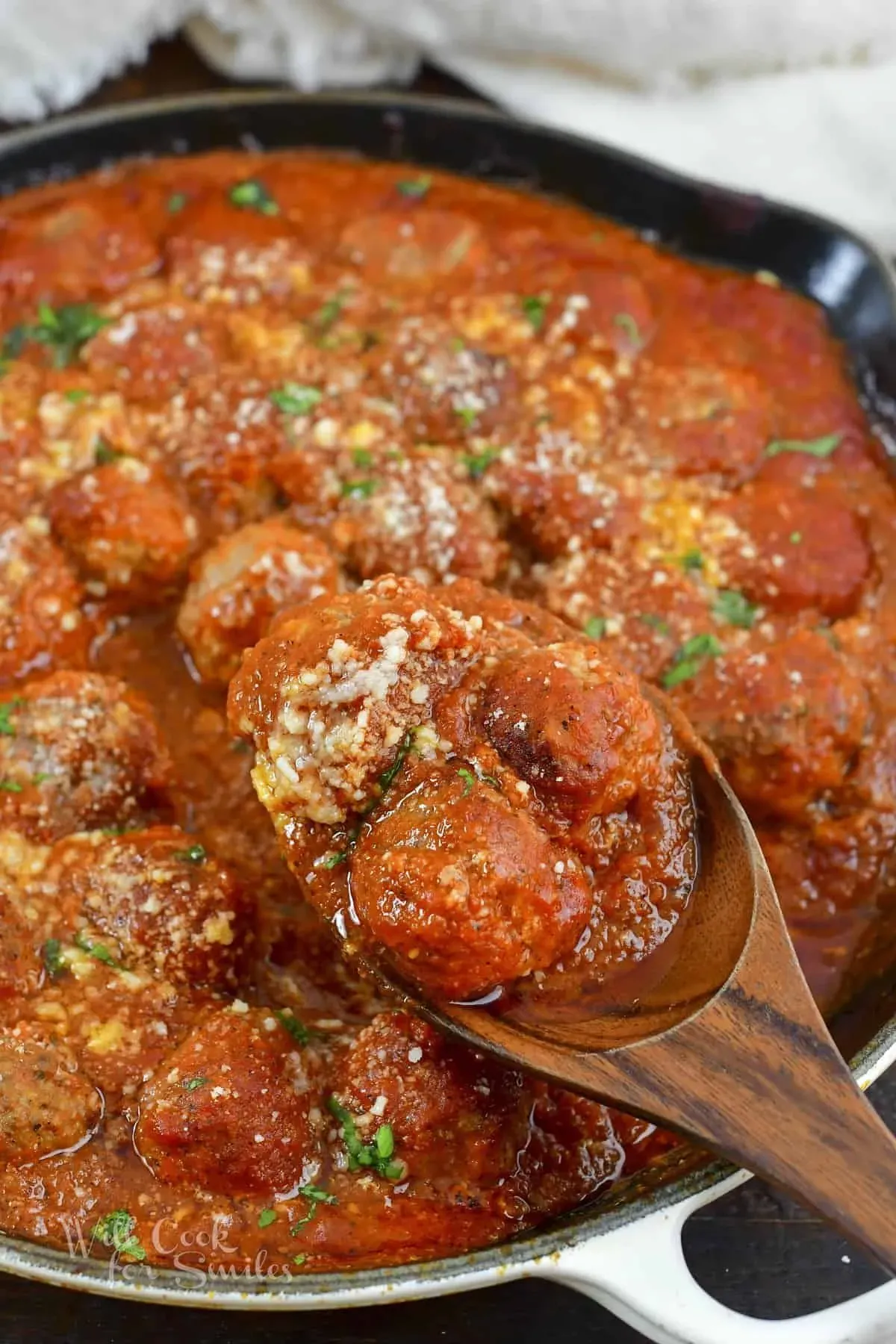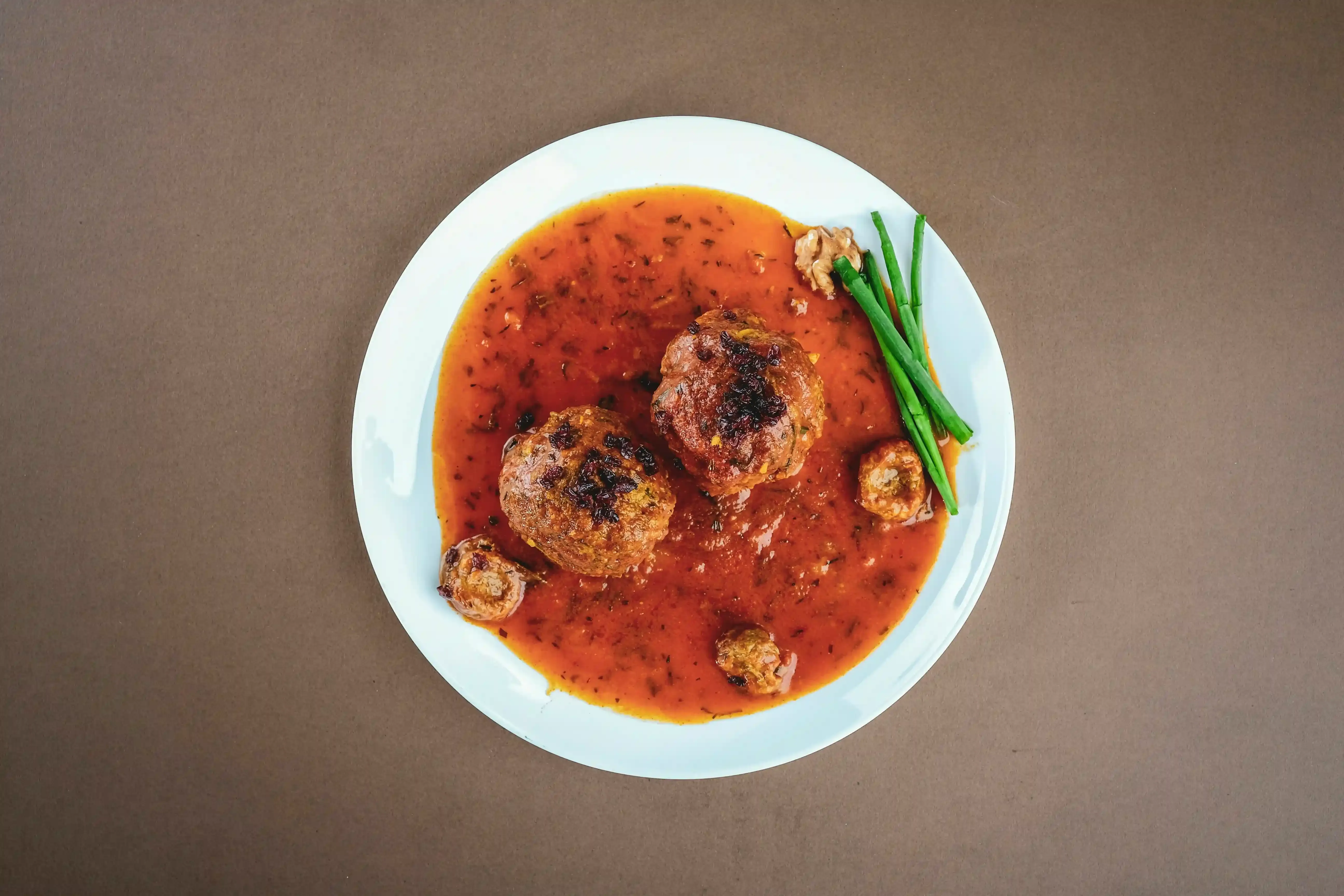Table of Contents
Let's be honest. You've probably made meatballs before that ended up tasting like dry, sad little hockey pucks. Or maybe they fell apart in the sauce, leaving you with meaty crumbles instead of glorious spheres. It's a common culinary heartbreak. But what if you could consistently create meatballs that are tender, juicy, and packed with flavor? That's exactly what we're tackling today. We're diving deep into the world of the absolute best Italian meatball recipes.
Why These Are the Absolute Best Italian Meatball Recipes

Why These Are the Absolute Best Italian Meatball Recipes
Look, plenty of recipes claim to make great meatballs. But the absolute best Italian meatball recipes deliver a specific, undeniable result: meatballs that are ridiculously tender on the inside, hold their shape perfectly, and burst with savory flavor. It's not about secret ingredients you can't find; it's about understanding the fundamental techniques that make the difference between a decent meatball and one that makes people close their eyes and sigh happily. These aren't the dry, dense lumps you might have encountered. We're talking about meatballs so juicy they almost melt, infused with rich tomato sauce after a long, slow simmer.
Think about the last time you had a truly memorable meatball – it wasn't just the sauce, right? It was the texture, the way it yielded easily to your fork, the depth of flavor in the meat itself. That experience isn't accidental. It comes from a careful balance of meat types, the right binder that keeps things moist without making them mushy, and a cooking process that locks in juices before they even hit the sauce. That's the core promise of the absolute best Italian meatball recipes we're talking about.
Essential Ingredients for Absolute Best Italian Meatball Recipes

Essential Ingredients for Absolute Best Italian Meatball Recipes
Making the absolute best Italian meatball recipes starts, unsurprisingly, with the ingredients. You can't fake your way to greatness here. Think about the foundation: the meat. A mix is key – typically beef and pork, sometimes veal. This blend gives you the right balance of flavor and fat for moisture. Then there's the binder, often breadcrumbs soaked in milk or water (a panade, if you want to sound fancy), which is crucial for tenderness and holding everything together without turning it into a brick. Don't skimp on fresh ingredients either; we're talking fresh parsley, maybe some basil, good quality Parmesan cheese grated right off the block, not that dusty stuff in a can. Garlic and onion, finely minced or grated, provide that essential aromatic base. And salt and pepper, of course, but season judiciously.
Crafting the Absolute Best Italian Meatball Recipes: StepbyStep

Crafting the Absolute Best Italian Meatball Recipes: StepbyStep
Mixing Your Way to Perfection
you've gathered your ingredients. Now comes the hands-on part. This is where many people mess up, usually by overworking the meat. You want to mix everything gently. Start with your panade – the soaked breadcrumbs. Squeeze out the excess liquid but leave them moist. Combine this with your ground meats, grated cheese, minced garlic and onion, chopped herbs, salt, pepper, and maybe an egg or two depending on the specific recipe ratio. Use your hands, but treat the mixture kindly. Mix just until everything is incorporated. Overmixing develops the protein too much, leading to tough meatballs. We're aiming for tender, remember? Think of it like kneading dough, but the absolute opposite goal.
Forming and Searing for Structure and Flavor
Once your mixture is ready, it's time to form the meatballs. Keep them roughly the same size, maybe golf ball or slightly larger. Uniformity ensures even cooking. Don't pack them too tightly; a light touch helps keep them tender. Now, the searing step is crucial for the absolute best Italian meatball recipes. Some recipes skip this and go straight to simmering, which results in pallid, less flavorful meatballs. Searing, whether by broiling in the oven or pan-frying, creates a beautiful brown crust. This crust isn't just for looks; it locks in juices and adds a layer of rich, complex flavor that simmering alone can't achieve. Broiling on a baking sheet lined with foil is my preferred method – less mess, more even browning.
- Use a gentle hand when mixing.
- Don't overwork the meat mixture.
- Form meatballs to a consistent size.
- Do not skip the searing step.
- Broiling offers even browning with less cleanup.
Simmering Low and Slow
After searing, your meatballs are halfway there. They've got their structure and initial flavor, but they aren't cooked through and they haven't absorbed any sauce goodness yet. This is where the magic truly happens for the absolute best Italian meatball recipes. Gently transfer the seared meatballs into your simmering tomato sauce. Make sure the sauce is warm and bubbly, not boiling violently, which could break them apart. The key here is low and slow. Let them simmer for at least 1.5 to 2 hours, uncovered or partially covered. This long, gentle cook time allows the meatballs to finish cooking, become incredibly tender, and soak up all the delicious flavors from the sauce. It's a test of patience, but the result is worth every minute.
Serving Your Absolute Best Italian Meatball Recipes

Serving Your Absolute Best Italian Meatball Recipes
Classic Pairing: Pasta Perfection
So, you've put in the time, simmered them low and slow, and now you're standing over a pot of glorious, saucy meatballs. The most classic way to enjoy your absolute best Italian meatball recipes? With pasta, of course. Think thick spaghetti, sturdy rigatoni, or even a wide pappardelle. The key is to serve the meatballs and sauce over the hot pasta, letting that beautiful sauce coat every strand. Don't just dump the meatballs on top; nestle them in, ensuring they're bathed in the sauce they've been getting cozy in for the last couple of hours. A generous sprinkle of freshly grated Parmesan cheese is non-negotiable here. Maybe a little extra drizzle of good olive oil.
Beyond the Noodle: Versatile Serving Ideas
While pasta is the go-to, your absolute best Italian meatball recipes aren't limited to just that. These beauties are versatile. Stuff them into a crusty Italian roll with plenty of sauce and melted provolone or mozzarella for an epic meatball sub. Serve them as an appetizer on their own with toothpicks, letting people marvel at their tenderness. Or, for a lighter meal, serve them alongside some crusty bread for dipping, maybe with a simple side salad. They even work great over creamy polenta or mashed potatoes if you're feeling adventurous. Don't let convention box you in.
- Serve over spaghetti, rigatoni, or pappardelle.
- Make a hearty meatball sub on a crusty roll.
- Offer as a stand-alone appetizer.
- Pair with creamy polenta or mashed potatoes.
- Serve with crusty bread for dipping in the sauce.
Presentation and Final Touches
You've nailed the flavor and texture of your absolute best Italian meatball recipes, so make them look good! A simple garnish can make a big difference. Fresh basil leaves, torn or roughly chopped, add a pop of color and fresh aroma. A final grating of Parmesan cheese over the top just before serving is essential. If you want to get fancy, a dollop of ricotta cheese on the side or on top of the pasta provides a cool, creamy contrast to the rich sauce and tender meatballs. Serve them hot, straight from the pot, letting the steam carry that incredible aroma. This isn't just food; it's an experience, so present it like one.
Tips, Tricks, and Variations for Your Meatball Mastery

Tips, Tricks, and Variations for Your Meatball Mastery
Nailing the Seasoning and Mix
Getting the flavor right in your absolute best Italian meatball recipes is more than just tossing stuff in. Taste your mixture *before* you form the balls. Seriously. Fry up a tiny pinch in a pan. Does it need more salt? More garlic? A little more pepper? Adjust accordingly. It's a simple step that prevents disappointment later. Also, remember that gentle mixing rule? It's critical. Think about aerating the mix slightly as you combine everything, rather than compacting it. This light touch is a game-changer for tenderness. Don't be afraid to experiment with herb ratios – some like more parsley, others love a hint of oregano in the mix itself.
Playing with Meat and Additions
While beef and pork are the classic combo for the absolute best Italian meatball recipes, don't feel shackled. You could do all beef, or add some ground veal for extra tenderness and a milder flavor. If you're feeling adventurous, a little ground lamb can add a different dimension. Another popular variation, especially in Roman-style meatballs, is adding ricotta cheese directly into the mix. This makes the meatballs incredibly light and pillowy. Just be mindful that adding ricotta might require slightly less liquid binder (like milk for the breadcrumbs) or a touch more breadcrumbs to get the right consistency for forming.
Meat Mix | Flavor Profile | Texture Notes |
|---|---|---|
Beef & Pork (Classic) | Rich, Savory | Juicy, Tender |
Beef, Pork, & Veal (Polpette) | Softer, Milder | Very Tender, Lighter |
Beef Only | Beef-Forward | Can be drier if lean; use fattier cuts |
Beef & Ricotta | Creamy, Mild | Extremely Light and Pillowy |
Making Ahead and Freezing
Mastering the absolute best Italian meatball recipes means you can plan ahead. You can make the mixture, form the balls, and even sear them, then let them cool completely before storing. Pop them in an airtight container in the fridge for a day or two before simmering. For longer storage, freezing is your friend. You can freeze the raw meatballs on a baking sheet until solid, then transfer them to a freezer bag. Or, freeze the seared meatballs the same way. You can even freeze them already simmered in sauce. Just thaw overnight in the fridge and gently reheat. Having a stash of these ready to go is a beautiful thing on a busy weeknight.
Mastering the Meatball
So there you have it. Making the absolute best Italian meatball recipes isn't rocket science, but it does require paying attention to the details we've covered. Skip the dry breadcrumbs, understand the panade, and give them time in the sauce. Get these elements right, and you'll consistently turn out meatballs that actually taste like something, instead of bland, dense disappointments. It's about technique, decent ingredients, and avoiding the common pitfalls. Now go make some meatballs that won't embarrass you.